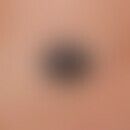DefinitionThis section has been translated automatically.
EffectsThis section has been translated automatically.
You might also be interested in
IndicationThis section has been translated automatically.
Conventional medicine indicated for porphyria cutanea tarda and polycythemia vera. Naturopathically also in overfed patients, metabolic diseases such as obesity, gout, diabetes mellitus, hyperlipidemia, diseases with a Hct > 40% and a Hb of > 145 g/l, hemochromatosis. Hypertension. Also in cardiovascular diseases, respiratory problems, shortness of breath, dizziness, sweating and circulatory disorders of the brain. Venous stasis corresponding to chronic venous insufficiency Venous insufficiency, chronic.
ImplementationThis section has been translated automatically.
Undesirable effectsThis section has been translated automatically.
vasovagal reaction - Caution: Lie patient down! Headache, shingling, haematoma locally at the blood collection site, infection of the puncture site.
ContraindicationThis section has been translated automatically.
Anemia, dehydration, acute diarrhea, hypotension. Physically debilitated patients.age > 80 yearscoronary heart disease, during mensturation.
Notice. Bloodletting therapy is indicated for full types, not for empty types.




